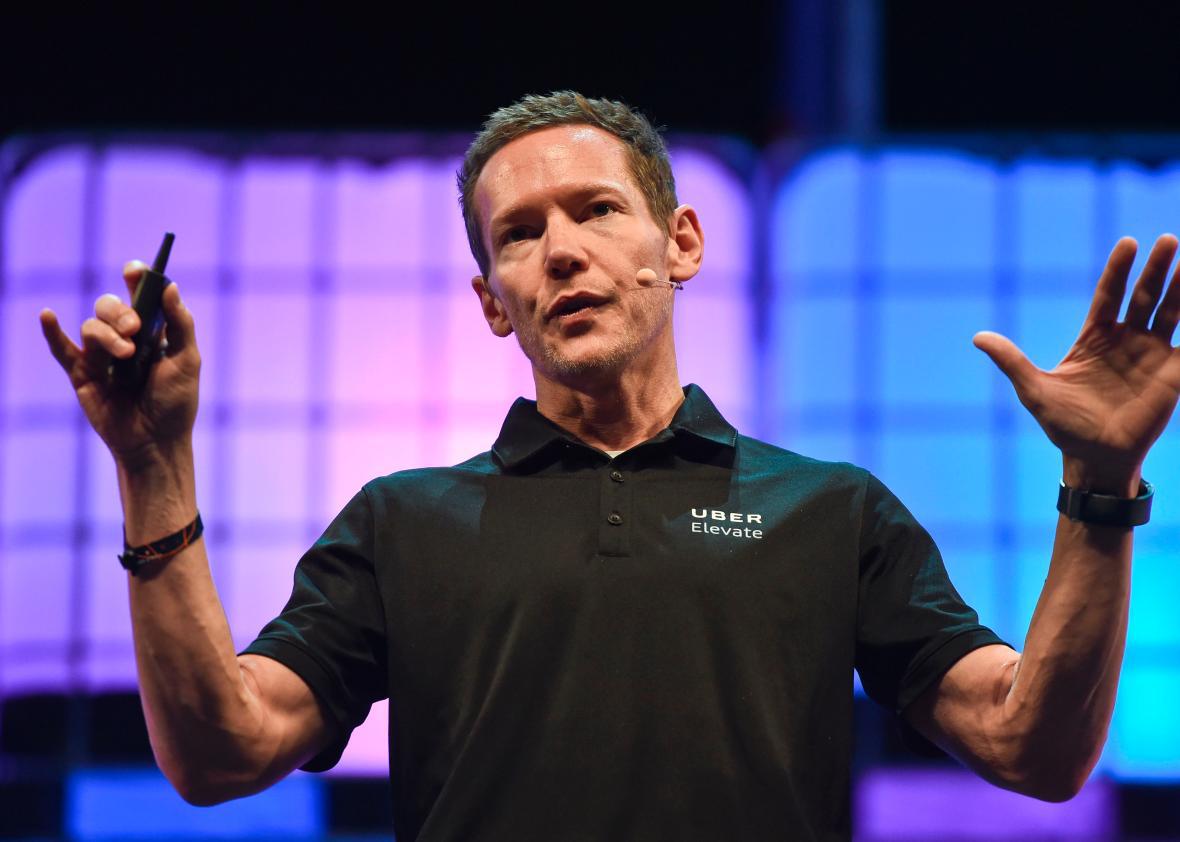If you believe the hype, Uber is taking to the skies in three years.
During the Web Summit in Portugal on Wednesday, Uber’s chief product officer Jeff Holden announced the company had signed a Space Act Agreement with NASA to build an air traffic control system tailored to flying cars. Holden also added Los Angeles to the list of locations where Uber hopes to launch its aerial vehicles by 2020; he had identified Dallas–Fort Worth and Dubai as pilot cities in April. By the time the L.A. hosts the 2028 Olympics, Holden predicts that the city’s population will be making “heavy use” of the UberAir service.
Uber also released a concept video of a woman beating traffic in a flying car to get home to her family, which plays like a sepia-toned preview to the futuristic commute famously envisaged in The Jetsons. The video suggests passengers will use phone apps to schedule trips and pass through the boarding gates at the “Uber Skyports” that the company apparently plans to build on the roofs of skyscrapers.
The video is highly theoretical, since the electric and autonomous vertical take-off and landing, or VTOL, technology required doesn’t even exist yet. Plus, there are still big questions regarding the infrastructural logistics required to facilitate this potentially dangerous and complex mode of transportation. We haven’t even fully figured out how to regulate commercial drones, but Uber has been promoting its 2020 launch date since last year.
The transportation industry has been abuzz with the prospect of flying cars in recent years, as more than a dozen companies have started their own projects to build a low-flying passenger aircraft for metropolitan travel. Rodin Lyasoff, CEO of the Airbus subsidiary A3, announced in September 2016 that the company would construct a prototype of an autonomous aerial taxi by the end of this year. Boeing acquired one of Uber’s flying car partners in October, and Google co-founder Larry Page has also invested in a number of VTOL startups over the years.
But despite this flare-up of activity, flying cars have a long path to viability. Uber is still working on designing routes in urban areas with the help of aircraft, infrastructure, and real estate companies. And getting FAA approval may be a hurdle. Consumer drones have been available for around five years, but the administration still doesn’t let companies use them for most practical commercial applications like package delivery.
Of course, one of the most pressing hazards that needs to be addressed is the prospect of midair collisions with buildings and other aircrafts. It seems Uber is now counting on its partnership with NASA to alleviate that concern by working with the agency on Unmanned Traffic Management and Unmanned Aerial Systems projects. NASA has in fact been conducting field tests of autonomous aerial traffic networks with the FAA since at least 2015.
And collisions aren’t the only concern. As Slate’s Henry Grabar has pointed out, “The question is not if we can take a cheap, everyday product and make it fly, but if we can take a big, loud, expensive, relatively dangerous, pain-in-the-ass flying machine and make it cheap, quiet, and safe.” Indeed, it is unclear how VTOL vehicles will surmount obstacles, like demanding maintenance requirements, that have prevented helicopters from achieving the quotidian ubiquity to which Uber aspires.
